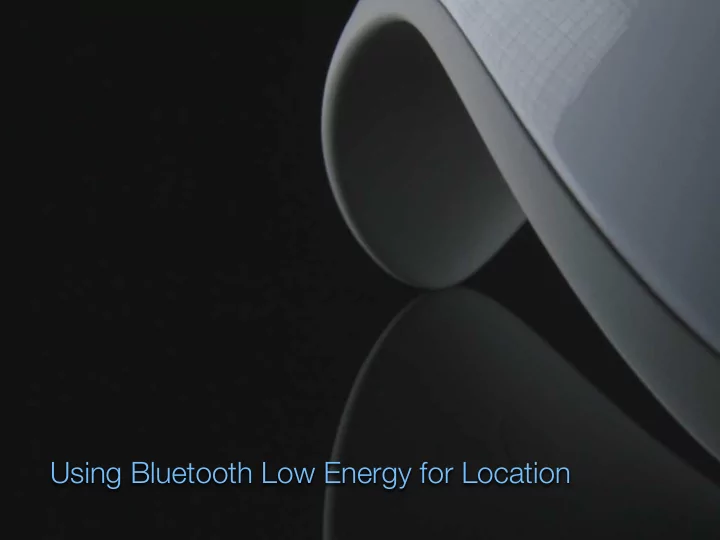

Using Bluetooth Low Energy for Location
What is BLE? Bluetooth Low Energy Originally designed by Nokia as Wibree (2001) Bluetooth Smart
Why has BLE been so Successful? Rapid adoption by vendors Apple Samsung Simple design Cheap in comparison to Wifi, Zigbee, 3g/4g Open Specification*
But is it really Bluetooth? Current specification is 4.1, comprised of Bluetooth classic Bluetooth smart (BLE) Not at all compatible with each other
Network Topology Broadcasts Fast and simple to do using advertising packets No security Connections Transmit data in both directions, similar to a socket Security*
Security BLE has in-band key exchange SIG invented their own key exchange protocol Has fundamental weaknesses
BLE Location
BLE Location Quickly determine location within a home Do this accurately otherwise users will be annoyed Keep the costs down
How to locate BLE devices? Standard method is to use Received Signal Strength Indicator (RSSI) A measurement of power present in a received signal Calculated for each frame Can be used to estimate distance once calibrated*
The challenges with RSSI There is no standardised relationship of any particular physical parameter to the RSSI reading. Vendors and chipset makers provide their own accuracy, granularity, and range for the actual power Requires testing each receiver to estimate distance..
RSSI based Location in practice 10 ± 10m 5 m ± 5m 1 m ± 1 m
Multipath and RSSI RSSI is easily varied by multipath Phenomenon which results in radio signals reaching the receiving antenna by two or more paths Varies building to building Can be mitigated by antenna diversity
Positioning techniques
Example Space Bedroom Combined Living / Kitchen Bedroom
Trilateration Is the process of determining absolute or relative locations of points by measurement of distances Used in global positioning systems Enables location of BLE Uses 3 or more fixed way points or beacons Gather RSSI from these fixed way points to calculate location Requires lots of way points to work effectively
Fingerprinting Uses fixed way points Preferably one per room Walls or divisions help Apply a gradient filter for smoothing the RSSI Enhanced by calibration of a space*
Observations RSSI based positioning is hard Trilateration didn’t work for us Way to much variance in values Smoothing didn’t help Fingerprinting working for room level location* Requires lots of data and Maths to improve accuracy
Hardware Important to have a stable and known group of devices reporting RSSI TI CC2540 / CC2541 (8051) http://www.ti.com/sensortag TI Wilink8 which combines wifi/bluetooth/ble Nordic Semiconductors nRF51822 (ARM)
Future Work Move from RSSI to Channel State Information (CSI) Fine Grained metric full of frequency domain information Requires access to the Baseband Controller Smarter way points
Recommend
More recommend